The Eternal Cinematic City. Fellini, Sorrentino, Rome (Part 1)
Even before Paolo Sorrentino’s La Grande Bellezza won the 2014 Academy Award for best Foreign Film, many film critics had pointed out its many similarities with Federico Fellini’s iconic La Dolce Vita. But some failed to specifically address the extent Fellini’s films in general and La Dolce Vita in particular influenced La Grande Bellezza. Viewing the films together may give us insights into how both film directors used their art to address common questions and problems of the Italy of their time.
Like Fellini (1920-1993), Sorrentino (born 1970) came to Rome as a young man and made ithis home, both psychologically and cinematically. Both use their films to convey Rome’s beauty, elegance, decadence and corruption thereby commenting on the social, psychological and moral status of the entire country. Fellini was critiquing the so-called “economic boom” of the late 1950s and early 1960s when Italy was transformed from a rural, agrarian, Catholic country into an urban, cosmopolitan and modern society increasingly divorced from its heritage. Sorrentino’s film can be seen as a critique of contemporary Italy after the “bunga-bunga” years of Silvio Berlusconi.
Both directors come from a long line of writers, intellectuals and artists from the “provinces” who sought artistic inspiration in the eternal city and adopt the city as their own. While they admire Rome’s grandeur and beauty, they also recognize its long-standing faults and flaws. If Fellini was marked by his experience of World War II in Rimini, the younger director was affected by a deeply personal tragedy. At the age of seventeen, Sorrentino lost his parents to a gas explosion at their home in Naples. It was this tragedy that diverted him from a career in banking (like his deceased father) and gave him the freedom to become a film director.
In both films, the city of Rome plays an integral role and functions as a central protagonist. Yet even from their respective opening scenes, the two films diverge. The opening scene of La Dolce Vita is a tracking shot which shows two helicopters—one “sacred” and one “profane.” The first is carrying an immense statue of Christ to the roof of St. Peter’s Basilica in Rome. The other helicopter is carrying journalist Marcello Rubini (played by Marcello Mastroianni), along with his trusted colleague the photographer who gave rise to the new character of “Paparazzo.” Marcello is a jaded journalist following the news story about the statue but several girls in bikinis on a rooftop quickly distract him. This first scene shows the different cities of “Rome.” The very first shot shows the ancient aqueduct in ruins; then the helicopters fly over the newer outskirts of the city, built during the fascist regime (1922-1943). Fellini is setting the first scene of the film for us to see Rome in its many historical and cultural layers. There is a jarring difference between what the English poet Shelly called the “melancholy of ruins” and the monotony of the impersonal fascist architecture of the Roman suburb. In this stunning opening scene, Fellini juxtaposes ancient pagan Rome, a Baroque Christian Rome, and the modern secular city. The “return” of Christ the Messiah (via helicopter) is not some devote religious imagery of angels with wings and celestial choir but a sacrilegious, sardonic and even blasphemous commentary on modern religion.
The opening shot of the La Grande Bellezza is far more ambiguous. A cannon is fired and church bells ring in the background. A man stands in front of a memorial with the words “Roma o Morte.” The camera wanders through a park tracking numerous memorial busts on the Janiculum Hill, while the church bells ring, birds chirp and a choir sings a religious hymn in the background. An Asian tourist walks away from his group to take photos of the city below and collapses to the ground as a choir continues to sing sacred music. Sorrentino revealed later that the tourist dies from Stendhal’s Syndrome, conveying how the beauty of Rome can psychologically and physically affect a person, especially a tourist.
Just as Mastroianni collaborated on many films with Fellini, Toni Servillo has worked closely with Sorrentino. In La Dolce Vita, Marcello is a journalist who wants to write a great novel. His friend, Steiner, urges him to complete it but Marcello loses his way in “the sweet life” of Rome. In La Grande Bellezza, Jep Gambardella (Servillo) has already written a great novel but he lost his way among the high life and makes a living as a journalist of gossip and the high life. Jep and Marcello are both adored by women and society but they don’t feel worthy of the adoration, thus they are constantly seeking a deeper meaning to life, which they still haven’t found. Jep and Marcello are often filmed alone. Even when they are with friends, at parties, and in crowds, the viewer senses they are both lonely and alone. There is a genealogical lineage between Marcello and Jep Gambardella. Jep might be Marcello after another forty years.
Both directors are careful in depicting the “surface” of their characters, including the symbolism of their clothes. Fellini asked Mastroianni to sleep in a tuxedo so that the suit would conform to his body and the actor would feel completely at home and ease in the formal wear. Sorrentino employed the finest tailors from Naples to outfit Jep as a dandy. Both protagonists walk the city, often at night. But while Marcello prowls Rome for sensual delight, Jep wanders the city, often at dawn, looking for enlightenment. Marcello is concerned only with the surface of things but Jep is seeking something more profound. In another scene, Jep stands on the shore contemplating the shipwreck of the cruise ship the Costa Concordia that struck some rocks in 2012 and was ruined because of the negligence and incompetence of the captain. The metaphor is crystal clear: both Jep and Italian society are floundering and in danger of sinking beneath the waves.
To be continued ....






























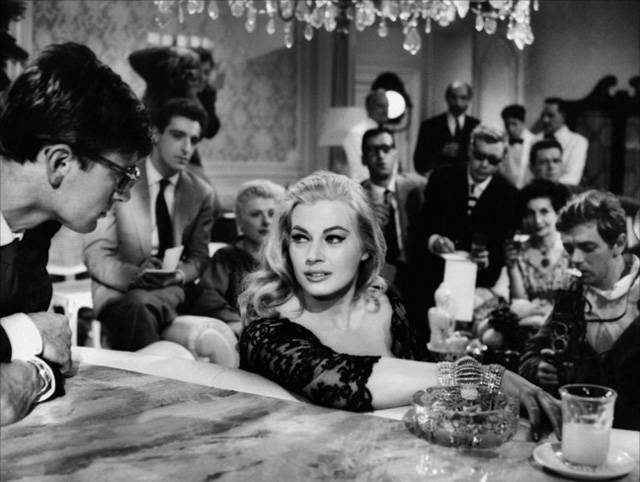
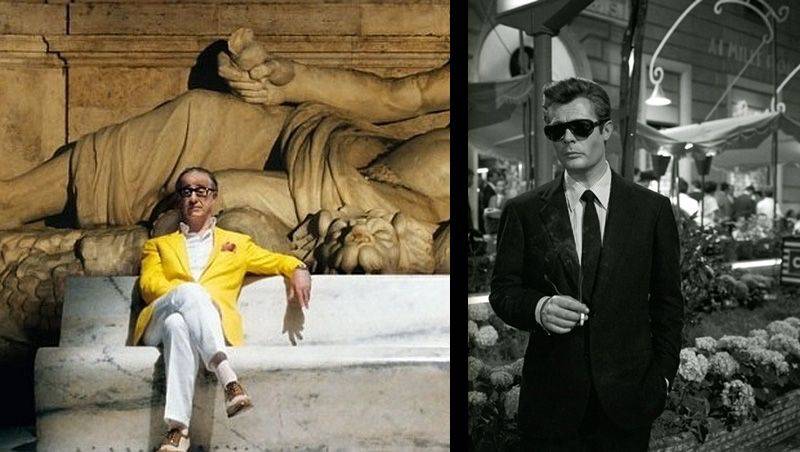
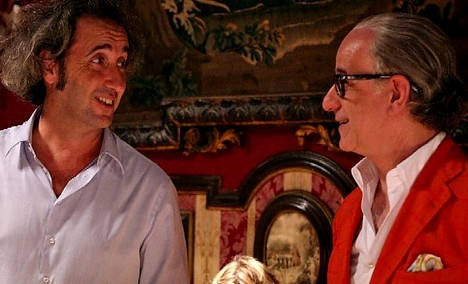
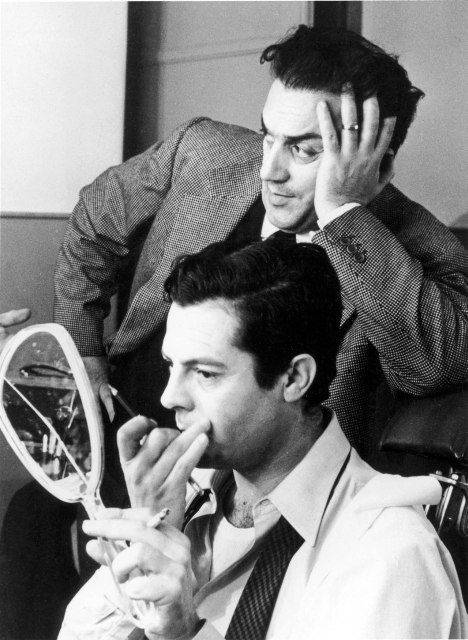
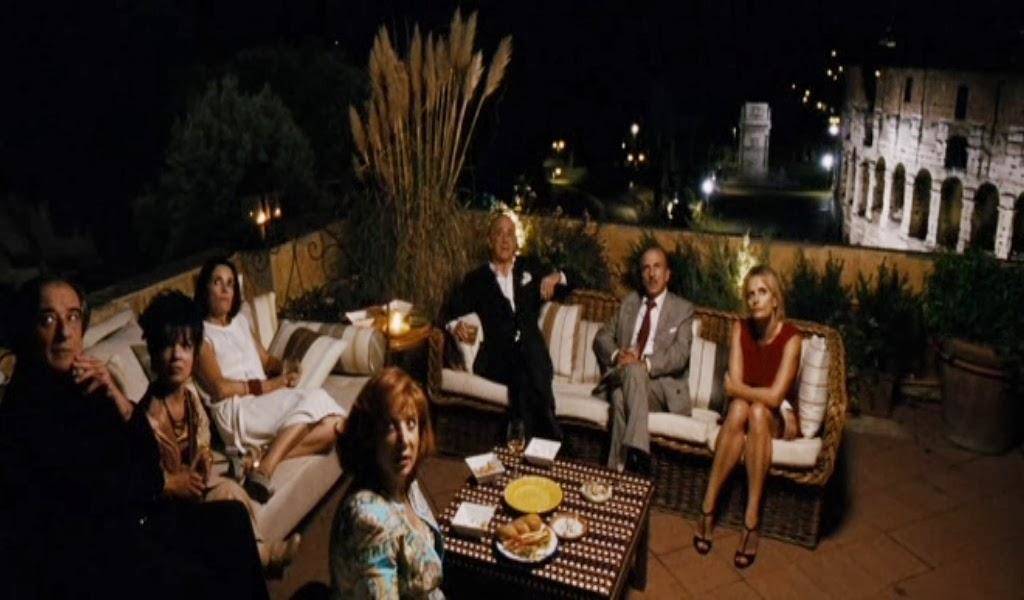




i-Italy
Facebook
Google+
This work may not be reproduced, in whole or in part, without prior written permission.
Questo lavoro non può essere riprodotto, in tutto o in parte, senza permesso scritto.